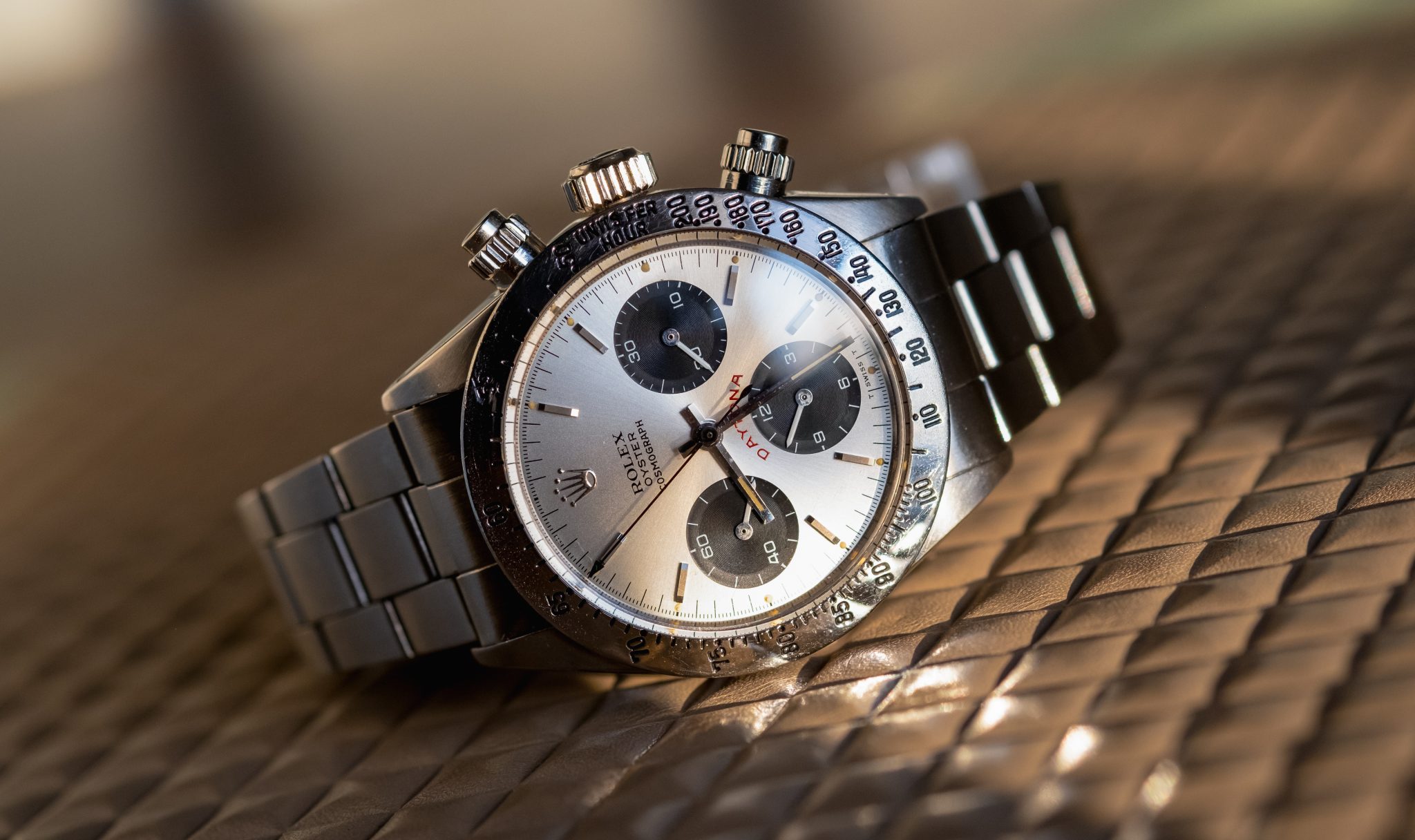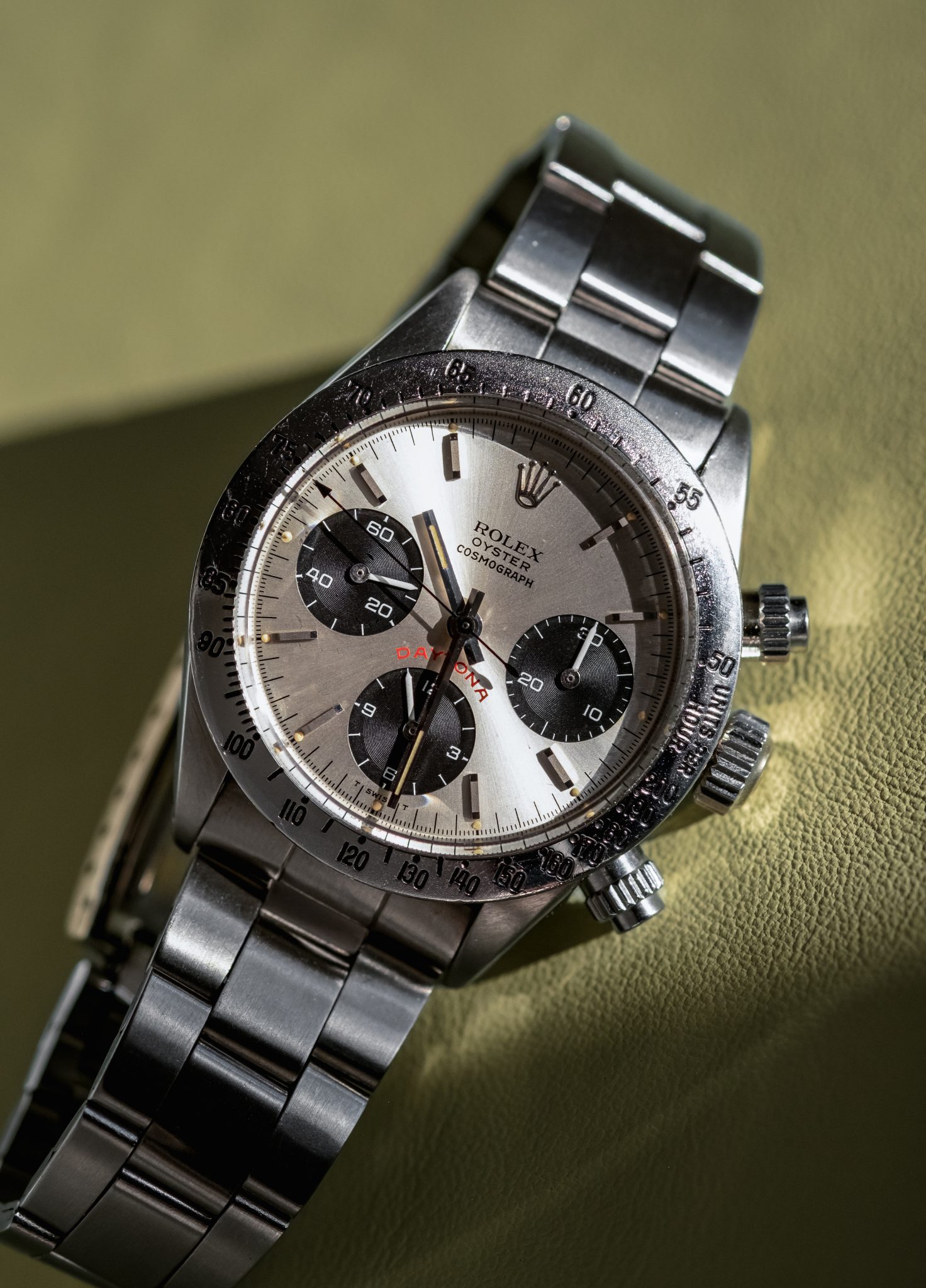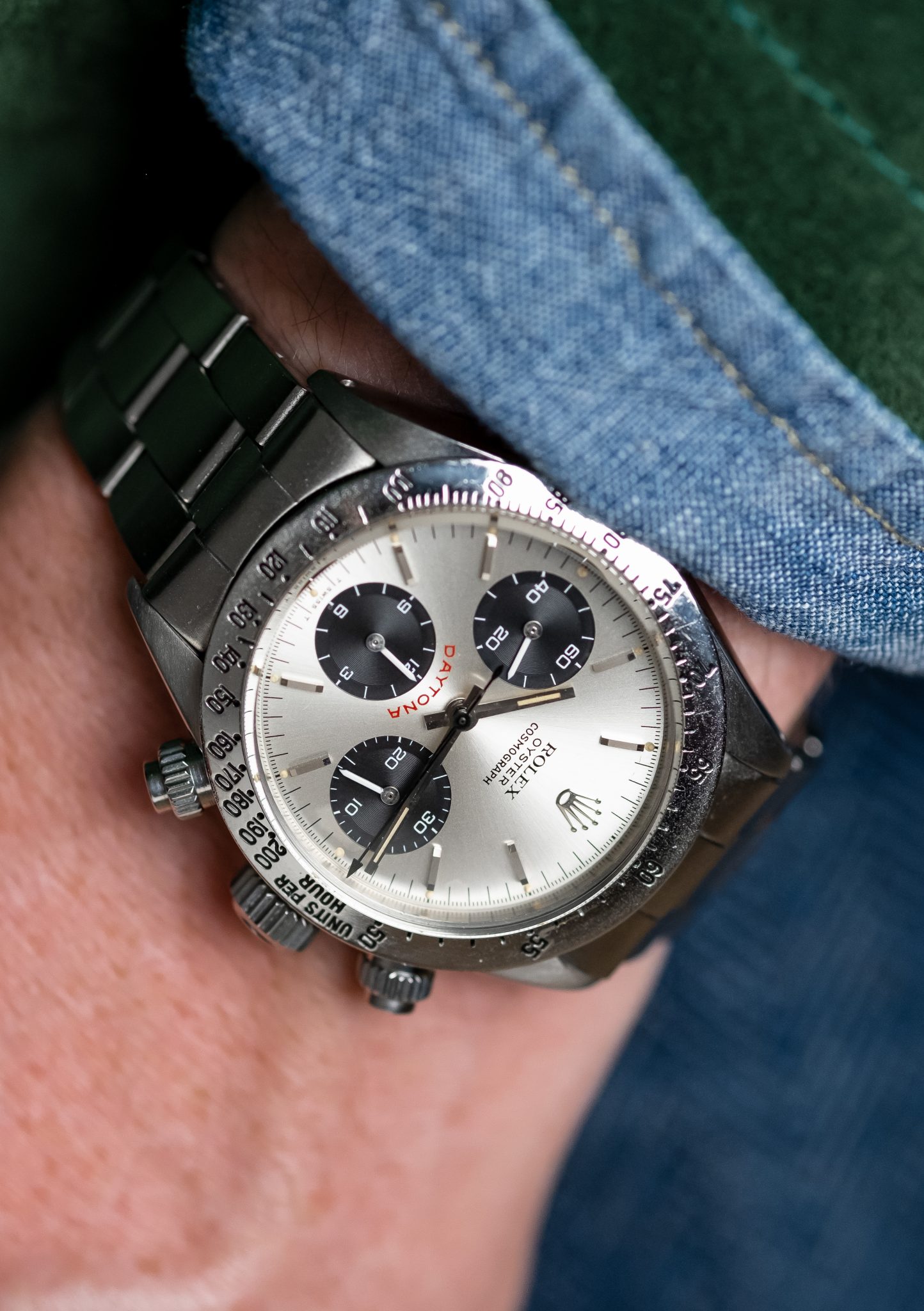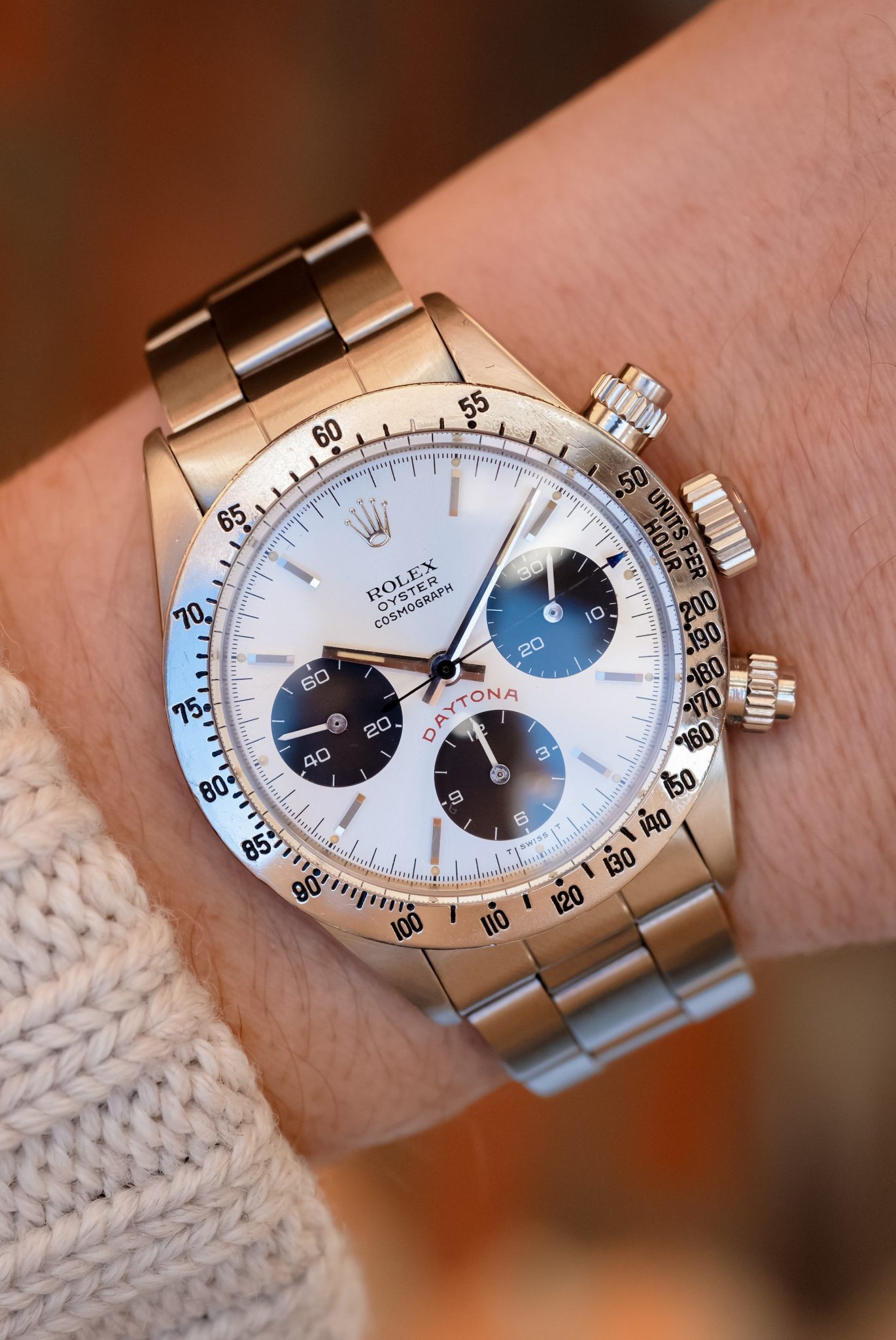
‘Floating Big Red’ Dial 6265 Rolex Cosmograph Daytona
At the center of vintage Rolex collecting lies the Daytona, it’s the sun around which everything else orbits. Except, if we’re keeping the astronomy analogy, it’s really a binary star system, as vintage Cosmograph is split between Paul Newmans and everything else from 6239 until the end of Zenith calibres. I’m finding a lot of value buys in the everything else category these days, excluding the pave or signed things, and this is one of them. It’s a 6265, last of the manual Oyster cases, with a ‘floating’ Big Red dial. Not the rarest, not the most common, but a classic of the genre with a slight twist. They’re surprisingly reasonable these days compared to but two years ago, sort of hiding in plain sight.


The final years of manual Oyster Daytonas are split between the famous 6263 and 6265, difference being acrylic black vs steel bezel. As watch god John Mayer once famously said of the black 6263 (bakelite bezel, otherwise same watch), ‘It’s the only vintage Daytona you’ll ever need, if you wore this out, people would go yeah, that guy knows what he’s doing.’ Now, the 6263 is generally a little more valuable. But why? Probably because it wears slightly larger, though you could make the argument it’s because it carries the 6240/6241/6264 lineage. But steel bezels are a value and carry the lineage of all the Rolex chronographs that came before. I’d argue they’re more discreet, but objectively this bezel was more laborious to manufacture.
In the many dials non-PN 6265s encompass, there is a great debate whether sigmas or Big Reds take first place. Well, I reject the premise and submit that ‘floating’ Big Reds take first. These are so named because there is more space between the subdial and the print, which gives the Daytona line the space and billing it deserves. But these are pedantic preferences. In any dial, a 6265 represents the twilight of one of the most dramatic narrative arcs a single reference could ever enjoy, the end of manual Rolex chronographs. Plus, that kind of perfect tritium patina ain’t easy to come by. Is a roughly 70K USD manual Rolex chronograph a value? I’m not sure that’s possible. But it is 25K less than it was two years ago and roughly 250K less than its PN sibling. Additionally, the floating dial is less common than most realize.
So actually, yes, it’s a value. Let me put it this way. To have a beautiful vacation, most will tell you to go to Mauritius or Barbados. But, actually, there is no objective best. The best trips are made by meeting a wild character you don’t expect in a hotel bar in Toronto or racing rental cars with your friend in middle of nowhere Croatia. It’s all about how you frame your preferences. This 6265 is one of mine, we sold a black dial last year and I still miss it. And I like that it connects directly to 6238 and what we call Pre-Daytona. But you may be more the PN or Pave Zenith type, and all are valid opinions; that’s the beauty of the Daytona world. Unless you like the Rainbow, in which case you’re a lost cause.

This example is not perfect but pretty great. The dial is clear of any major damage, no handstrikes, spotting, or cause for alarm. The tritium is aged to a lovely deep cream. Its case has seen a light polish as most have, but still has a full lug proportion. It comes on a 7835 with 257 endlinks with a correct 200 mk 1 bezel. It comes from a well-regarded London retailer.











